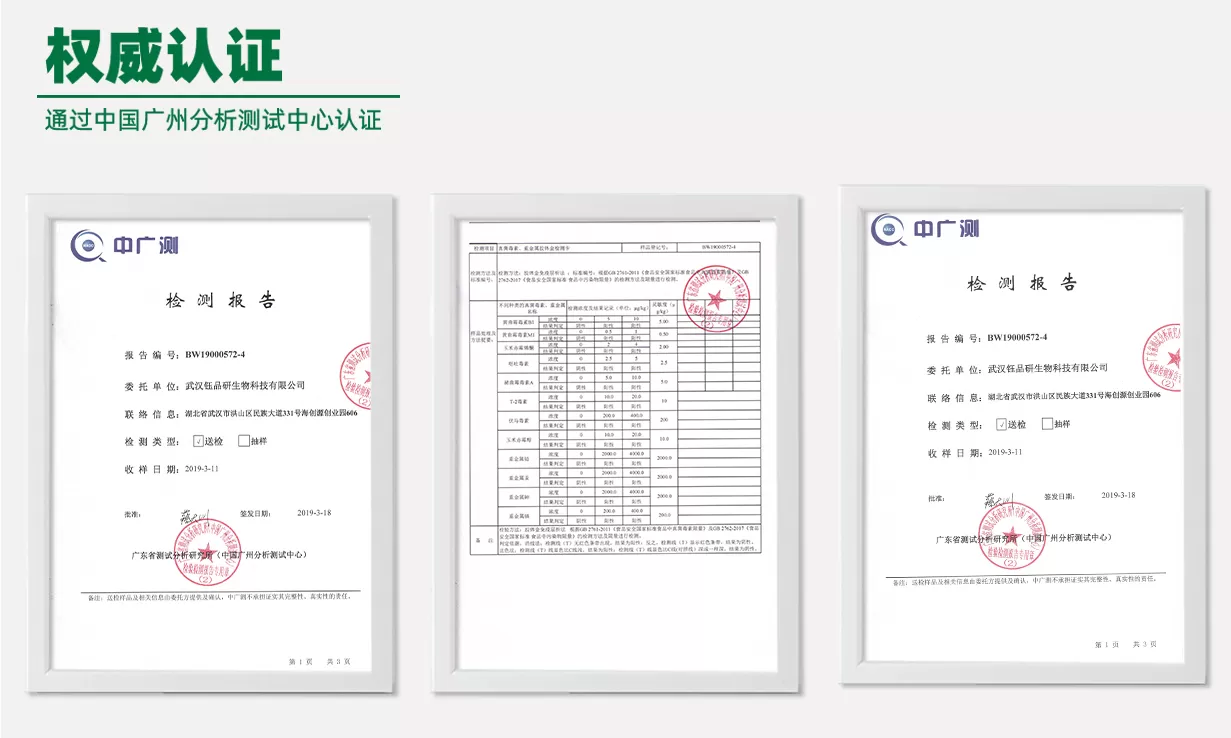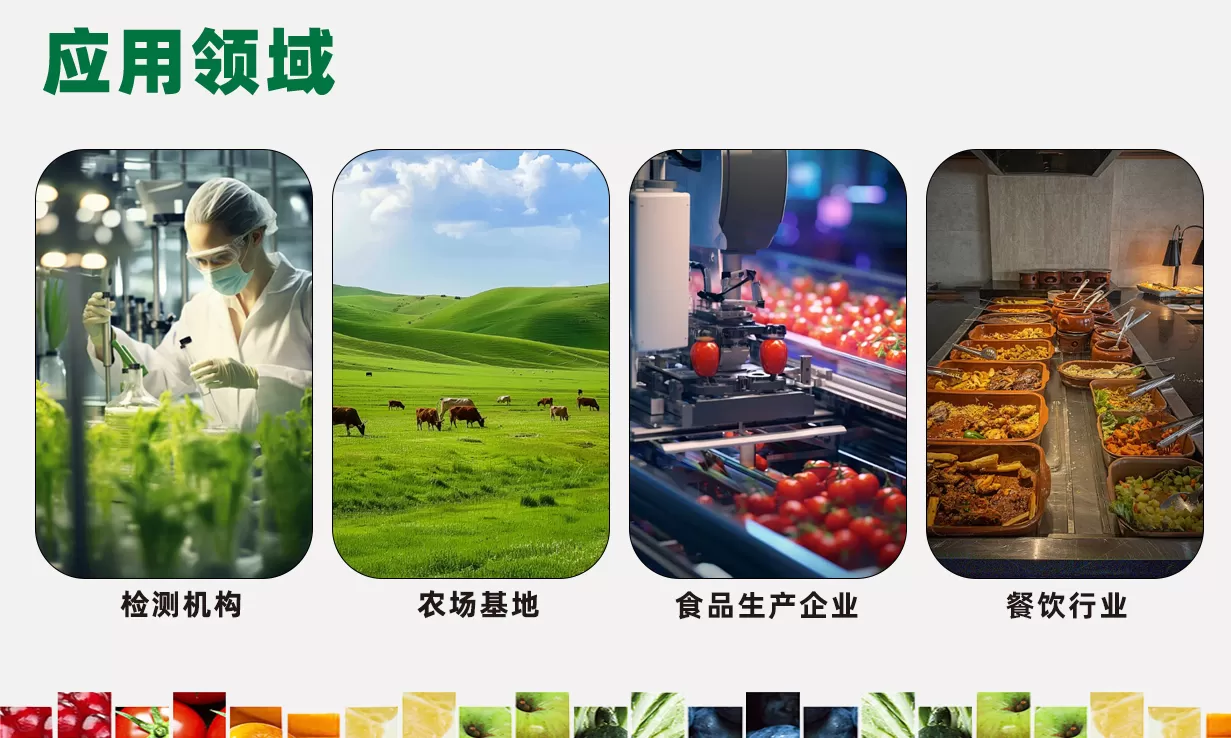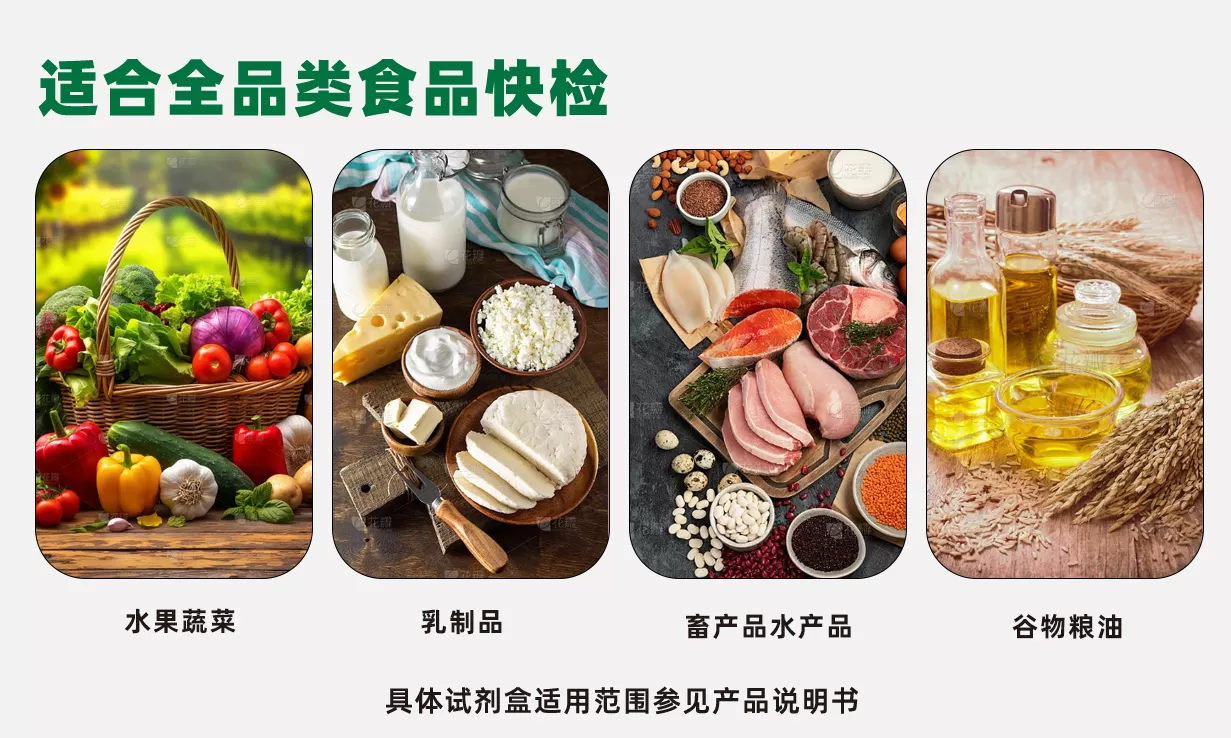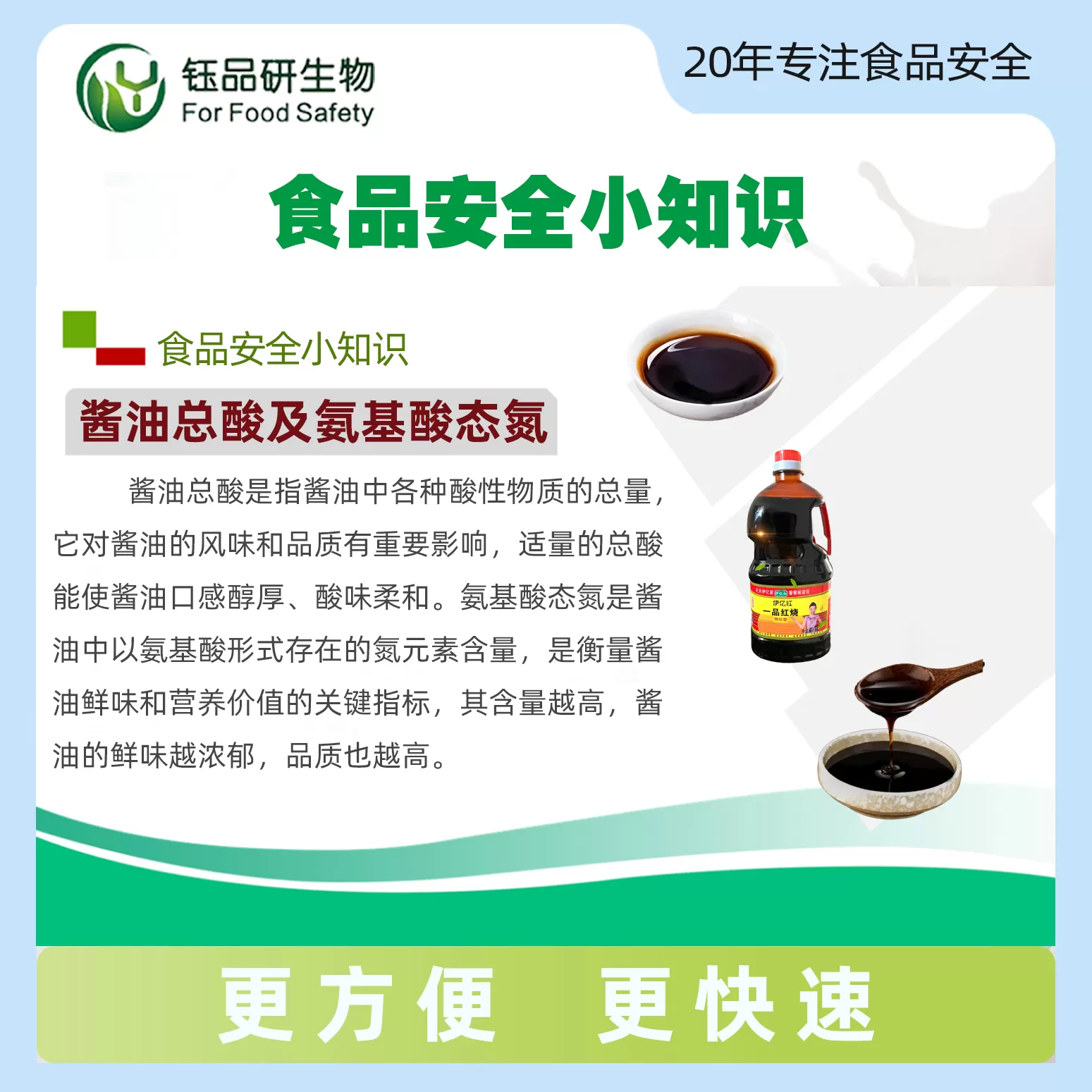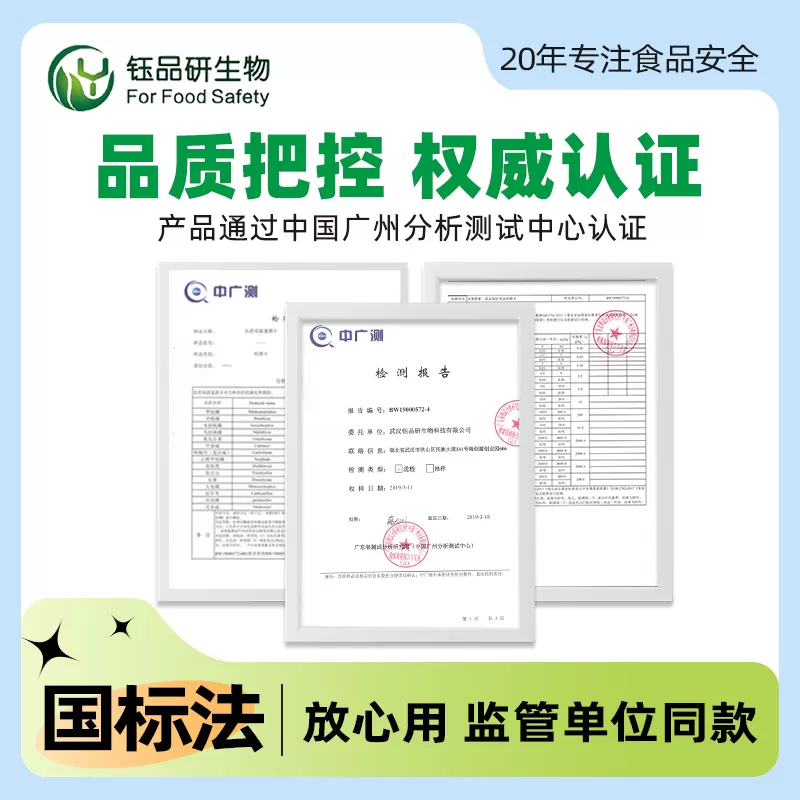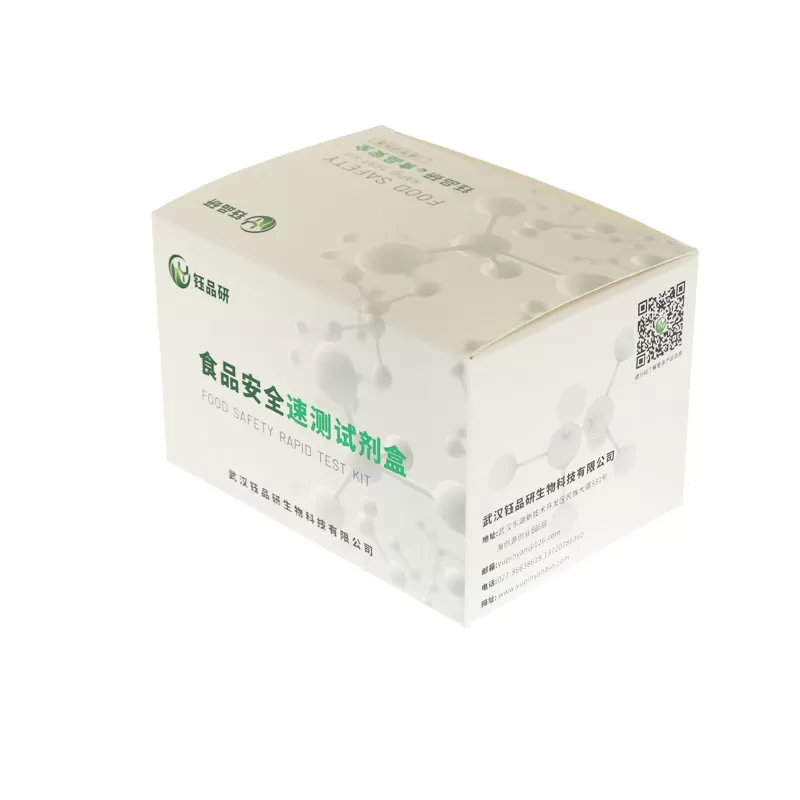Soy Sauce Total Acid and Amino Acid Nitrogen Rapid Detection Kit Instructions Product No.: YP-13-20
First, the method principle:
titrated with standard alkali, the content of total acid in soy sauce was calculated, and then the amino end of the amino acid was fixed with formaldehyde to make the carboxyl end free, titrated with standard alkali, and the content of amino acid nitrogen in soy sauce was calculated.
Second, the scope of application:
This kit is suitable for the rapid determination of total acid and amino acid nitrogen content in soy sauce.
3. Product composition:
Serial number
Name
Quantity
1
reagent A
1 bottle
2
reagent B
1 bottle
3
reagent C
1 bottle
4
reagent D
1 bottle
5
reagent E
2 bottle
6
10 mL centrifuge tube
10
7
20 mL sample cup (can be used repeatedly after cleaning)
20
8
manual
1 parts
four, product specifications:
20 times/box
five, detection steps:
pumping sample:
1, take 0.5 mL sample in 10 mL centrifuge tube, add pure water bandwidth evaluation to 10 mL scale,
shake well, as the sample to be tested;
2, take 1 mL sample to be tested in the sample cup, add 3 mL pure water, mix well, add 1 drop of re Vertically add reagent B dropwise, shake well after each drop until the solution in the sample cup turns red and the color does not disappear within 30 seconds, stop adding reagent B dropwise, and record the number of drops of reagent B.
In the case of the same sampling amount, calculate the total acid content of the sample according to the total acid equivalent to 0.6 g/100 mL per drop of reagent B, and compare the content on the national standard or sample nutrition label to determine whether the total acid content is qualified;
4, add 10 drops of reagent C dropwise to the sample cup, shake well, the red disappears, add 2 drops of reagent D dropwise, shake well;
5, add reagent B vertically, after adding 1 drop, shake well until the solution in the sample cup becomes purplish red, stop adding reagent B dropwise, and record the number of drops of the added reagent B. In the case of the same sampling amount, the amino acid content of the sample was calculated according to the amino acid nitrogen equivalent to 0.14 g/100 mL per drop of reagent B, and whether the amino acid nitrogen content was qualified was judged by comparing it with the content on the national standard or the sample nutrition label.
Old soy sauce sample:
1, take 1 mL of sample in a 10 mL centrifuge tube, add pure water bandwidth evaluation to 10 mL, shake well, and then take 1 mL of diluted sample from another 10 m nitrogen L centrifuge tube, add pure water bandwidth evaluation to 10 mL, shake well, as the sample to be tested;
2, take 1 mL of sample to be tested in the sample cup, add 3 mL of pure water, mix well, add 1 drop of reagent A vertically, shake well;
3, add reagent E vertically, shake well after each drop, until the solution in the sample cup turns red, and the color does not disappear within 30 s, stop adding reagent E dropwise, and record the added reagent E The number of drops.
In the case of the same sampling amount, the total acid content of the sample is calculated according to the total acid equivalent to 0.3 g/100 mL per drop of reagent E, and the content on the national standard or sample nutrition label is compared to determine whether the total acid content is qualified;
4, add 10 drops of reagent C to the sample cup dropwise, shake well, the red disappears, add 2 drops of reagent D dropwise, shake well;
5, add reagent E vertically, after each addition of 1 drop, shake well until the solution in the sample cup becomes purplish red, stop adding reagent E dropwise, and record the number of drops of the added reagent E. In the case of the same sampling amount, calculate the amino acid nitrogen content of the sample according to the amino acid nitrogen of each drop of reagent E equivalent to 0.07 g/100 mL, and compare it with the content on the national standard or sample nutrition label to determine whether the amino acid nitrogen content is qualified.
6. Precautions:
1. Reagent C is corrosive, and care should be taken during operation;
2. Reagent C must be added vertically and slowly when dripping, and each drop needs to be fully shaken.
Seven. Product storage conditions and shelf life:
Storage conditions: cool and dry in the dark
valid period: 1 year
